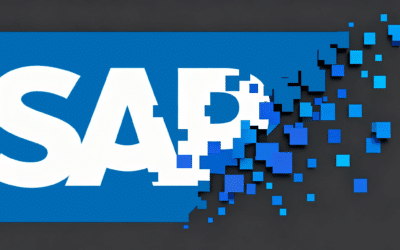
Navigating Digital Transformation with Modern Observability
SEP, 2023
by Andrew Walker.
Author Andrew Walker
Andrew Walker is a software architect with 10+ years of experience. Andrew is passionate about his craft, and he loves using his skills to design enterprise solutions for Enov8, in the areas of IT Environments, Release & Data Management.
In the realm of business strategy, digital transformation stands as a paramount objective. The intricacies of today’s computing infrastructure underscore the growing importance of end-to-end observability in this pursuit.
However, the relentless surge in data and dynamic technologies required to meet market demands presents a challenge. Current tools often fall short in handling this data deluge, resulting in increased costs and diminished competitiveness.
Enov8 IT & Test Environment Manager
*Innovate with Enov8
Streamlining delivery through effective transparency & control of your IT & Test Environments.
So, for solution architects, the question arises: How can observability be seamlessly integrated into the solution architecture framework, especially in an environment where new apps and end-user experiences are continually being launched? Let’s delve into the solution below.
The Benefits of Digital Transformation and Synthetic Monitoring
It’s indisputable that digitally mature businesses reaped the rewards of digital transformation, particularly when the pandemic swept through. These organizations demonstrated agility in swiftly adapting to minimize disruptions.
Post-Covid, the advantages of digital transformation persist across multiple facets of business, encompassing customer experience, productivity, innovation, agility, new business models, and collaboration. Enhanced transparency, improved customer attraction, and retention have also become evident.
This brings us to the topic at hand—observability. It plays a pivotal role in the machinery of digital transformation, serving as a bridge to data management approaches that empower organizations through insights gleaned from big data analysis. In essence, it acts as a facilitator for various technology tools and systems designed to make sense of this data.
However, the soaring data volumes in modern cloud computing environments often overwhelm existing observability tools, making it increasingly challenging to extract critical insights from this data deluge.
Fostering a Culture of Observability
Observability extends beyond mere logs, metrics, and traces. It involves a profound understanding of a system’s internal state, offering a holistic perspective on the internal workings of all applications, systems, and infrastructure. This requires harnessing external data and making it an ingrained practice.
Hence, it falls upon solution architects to champion the incorporation of synthetic monitoring into the organizational culture. This step is pivotal in maximizing the benefits of digital transformation.
Teams must be prepared to monitor all data sources, not limiting themselves to systems alone. It’s about comprehending the ‘how’ and ‘why’ of outcomes. The traces, logs, and metrics collected should serve as valuable tools for analysis. Moreover, the correlation between these metrics is essential to grasp the ‘why’ behind system behavior, ultimately tying it into incident management.
Observability should serve as the cornerstone of incident response, fostering data democracy. Everyone involved in performance management and optimization should have ready access to observability tools and data.
Key Metrics to Focus On
Monitoring distributed systems and big data presents complexity, but the right metrics can be invaluable, prompting proactive measures when things go awry.
Consider, for instance, Google’s software reliability engineers (SREs), who introduced a set of key signals to consistently track end-user experiences, known as the “golden signals.” These signals include:
- Traffic: Tracking system demand trends over time, where unusual upticks may signal potential issues.
- Latency: Measuring the time from request to response, visualized through a histogram.
- Errors: Monitoring total errors and the percentage of failed requests for anomaly detection.
- Saturation: Identifying the point where system resources are strained, detectable through load testing. Addressing saturation issues preemptively is crucial.
The Power of Synthetic Monitoring
In our exploration of observability as a cornerstone of digital transformation, it’s essential to delve deeper into a crucial aspect: synthetic monitoring. This powerful tool is more than just a buzzword; it’s a game-changer in the world of observability, enabling organizations to proactively ensure seamless operations and optimal user experiences.
What is Synthetic Monitoring?
Synthetic monitoring involves the creation of simulated user interactions with applications and systems. These interactions mimic real user behavior and interactions with your digital assets, providing invaluable insights into the health, performance, and functionality of your services.
Why Synthetic Monitoring Matters
- Proactive Issue Detection: One of the most compelling advantages of synthetic monitoring is its ability to detect issues before they impact real users. By continuously running predefined test scenarios, organizations can identify performance bottlenecks, errors, or downtime in their applications and infrastructure. This proactive approach allows for immediate remediation, reducing the risk of user dissatisfaction and revenue loss.
- Realistic User Experience Simulation: Synthetic monitoring goes beyond basic metrics; it replicates user journeys. This means you can gain a comprehensive understanding of how your applications and systems perform from an end-user perspective. Is your e-commerce website loading slowly during peak hours? Are there errors in the checkout process? Synthetic monitoring answers these critical questions.
- Benchmarking and Baseline Establishment: To measure progress and ensure continuous improvement, organizations need benchmarks. Synthetic monitoring provides a baseline for performance and functionality, allowing you to track changes over time accurately. This data-driven approach enables informed decision-making and targeted optimization efforts.
- Global Coverage: In today’s interconnected world, businesses often serve a global audience. Synthetic monitoring can emulate user interactions from various geographic locations, providing insights into regional variations in performance. This level of granularity is essential for businesses with a worldwide presence.
- Load Testing and Scalability Assessment: With synthetic monitoring, you can simulate sudden increases in user traffic to assess how your systems handle load. This is particularly valuable for ensuring that your infrastructure can scale efficiently during peak usage periods, such as holiday sales or product launches.
- Third-Party Service Validation: Many modern applications rely on third-party services or APIs. Synthetic monitoring can verify the availability and performance of these external dependencies, ensuring that your application’s functionality remains intact.
Integrating Synthetic Monitoring into Your Observability Strategy
To harness the full power of synthetic monitoring, organizations must integrate it seamlessly into their observability strategy. Solution architects and IT teams should collaborate to design and implement synthetic monitoring scenarios that align with business goals and user expectations.
Furthermore, synthetic monitoring should not operate in isolation. It should complement other observability components, such as logs, metrics, and traces, to provide a holistic view of your digital ecosystem.
Conclusion
In the contemporary business landscape, digital maturation, which includes effective observability and the integration of synthetic monitoring, is not merely advantageous but critical for survival. It is imperative for organizations to harness the benefits of digital transformation, including observability and synthetic monitoring, to enhance collaboration, reduce incident noise, acquire contextual insights, and automate remedial actions. As we navigate the complexities of today’s computing infrastructure and the challenges posed by data surges and dynamic technologies, the synergy between observability and synthetic monitoring emerges as a powerful force. It empowers organizations to not only adapt but thrive in the ever-evolving digital landscape.
In this journey, solution architects and IT teams play a pivotal role in championing observability and synthetic monitoring, ensuring their seamless integration into the organizational culture. This cultural shift, coupled with the adoption of synthetic monitoring, enables organizations to proactively detect issues, simulate user experiences, establish benchmarks, attain global coverage, and validate third-party services. It’s a comprehensive strategy that ensures digital excellence.
As we look ahead, the organizations that embrace digital transformation with observability and synthetic monitoring at their core will be the ones to lead, innovate, and flourish in an increasingly competitive and data-driven world. The path to digital success is illuminated by the power of observability and the game-changing capabilities of synthetic monitoring. It’s time for businesses to embrace this transformation and shape a future where data-driven decisions drive success.
Relevant Articles
Enterprise Release Management: A Comprehensive Guide
Enterprise Release Management (ERM) is a set of end-to-end practices that enable large organizations to effectively manage software releases. ERM is uniquely designed for the challenges of multiple teams building and releasing software simultaneously. ERM establishes...
Your Essential Test Environment Management Checklist
“Test Environment Management Checklist.” Yep, that sounds like a mouthful, but don’t let that discourage you. The idea here is quite simple—adopting a checklist to evaluate the soundness of your test environment management approach. Even though the idea sounds simple...
A Detailed Guide to SAP Data Masking
SAP systems handle some of the most sensitive data in the enterprise: financial transactions, HR information, supplier records, customer profiles, operational details, and more. For that reason, copying production data into non-production systems without modification...
Release vs Deployment Management: What’s the Difference?
In the always-an-adventure world of IT service management, there are several key processes that are essential for delivering high-quality services to customers and end-users. Two of the most critical processes are release management and deployment management....
7 Tools to Help with Application Rationalization
Application rationalization is the process of identifying which applications an organization should keep, update, consolidate, or retire. Think of it as a financial adviser, but instead of your investment portfolio, it's your application portfolio. Most companies take...
Pairing DevOps with Test Environment Management
For many organizations, DevOps is the best practice for efficiency. However, this model doesn’t come easily as the organization needs to put certain things in place. For example, the firm needs to incorporate the right tools to ensure its delivery pipeline and...











